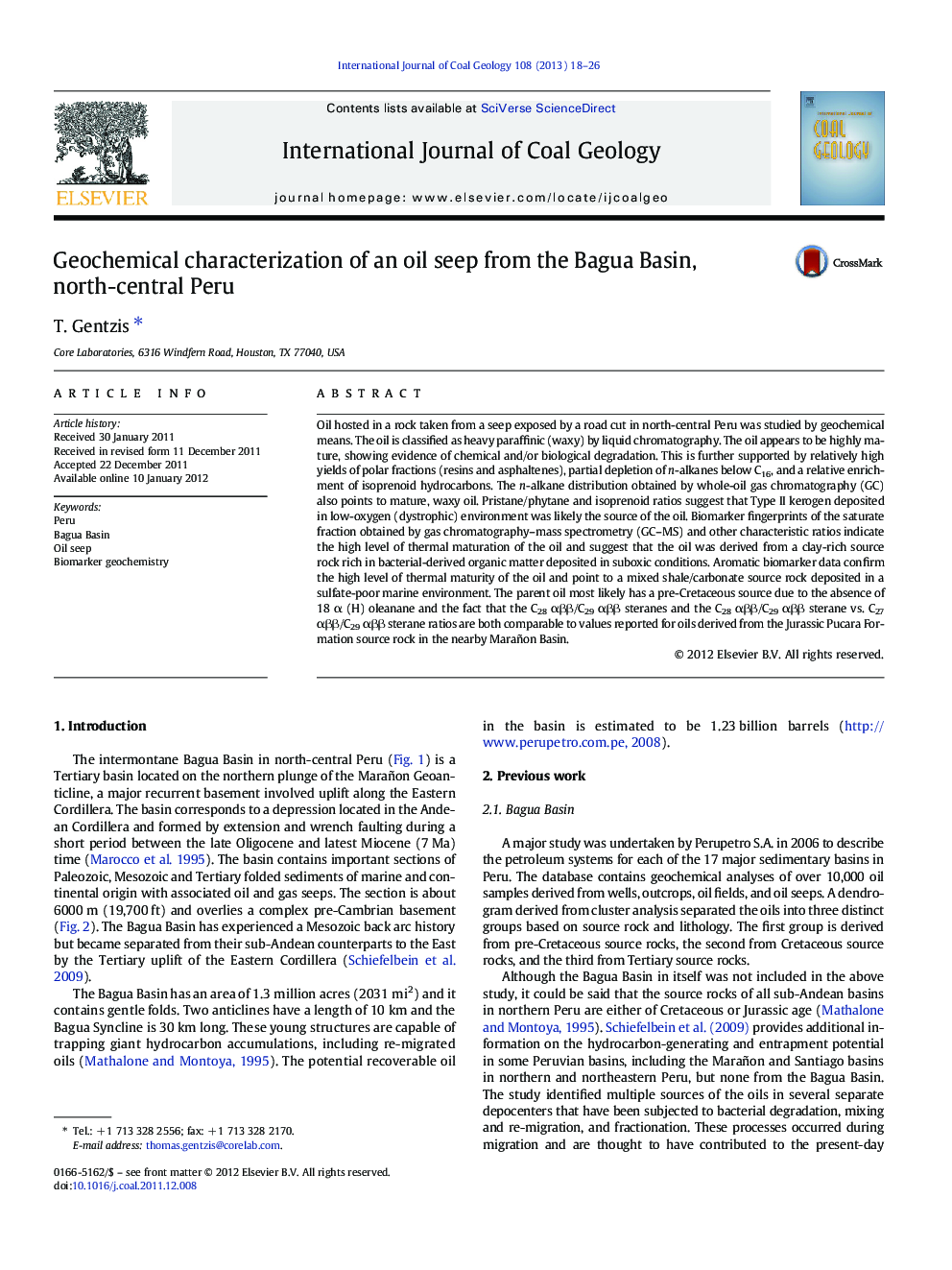| کد مقاله | کد نشریه | سال انتشار | مقاله انگلیسی | نسخه تمام متن |
|---|---|---|---|---|
| 1753412 | 1522586 | 2013 | 9 صفحه PDF | دانلود رایگان |

Oil hosted in a rock taken from a seep exposed by a road cut in north-central Peru was studied by geochemical means. The oil is classified as heavy paraffinic (waxy) by liquid chromatography. The oil appears to be highly mature, showing evidence of chemical and/or biological degradation. This is further supported by relatively high yields of polar fractions (resins and asphaltenes), partial depletion of n-alkanes below C16, and a relative enrichment of isoprenoid hydrocarbons. The n-alkane distribution obtained by whole-oil gas chromatography (GC) also points to mature, waxy oil. Pristane/phytane and isoprenoid ratios suggest that Type II kerogen deposited in low-oxygen (dystrophic) environment was likely the source of the oil. Biomarker fingerprints of the saturate fraction obtained by gas chromatography–mass spectrometry (GC–MS) and other characteristic ratios indicate the high level of thermal maturation of the oil and suggest that the oil was derived from a clay-rich source rock rich in bacterial-derived organic matter deposited in suboxic conditions. Aromatic biomarker data confirm the high level of thermal maturity of the oil and point to a mixed shale/carbonate source rock deposited in a sulfate-poor marine environment. The parent oil most likely has a pre-Cretaceous source due to the absence of 18 α (H) oleanane and the fact that the C28 αββ/C29 αββ steranes and the C28 αββ/C29 αββ sterane vs. C27 αββ/C29 αββ sterane ratios are both comparable to values reported for oils derived from the Jurassic Pucara Formation source rock in the nearby Marañon Basin.
► Fingerprinting of an oil seep from Peru was carried out by liquid and gas chromatography.
► The oil is heavily paraffinic, mildly biodegraded, and high in resins/asphaltenes.
► Biomarkers suggest that the oil is thermally at relatively high maturation level.
► The oil likely formed from a marine source rock (type II kerogen) rich in clays.
► The depositional environment is believed to have been dystrophic (suboxic).
Journal: International Journal of Coal Geology - Volume 108, 30 March 2013, Pages 18–26